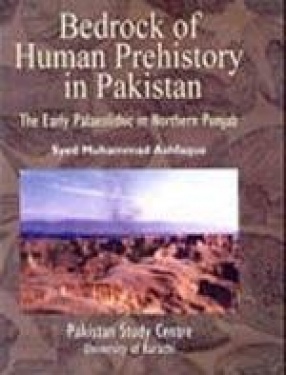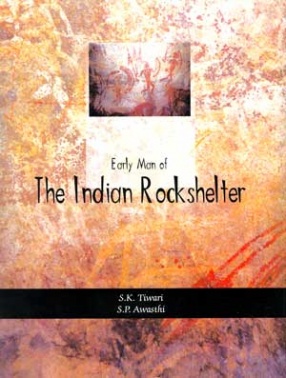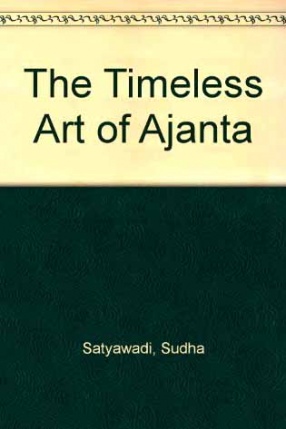This Monograph on Palaeolithic Archaeology of northern Punjab is based on field studies by the author, spreading over more than ten years. It discusses the subject in the northern India in 1935, when De Terra and Paterson called the attention of the Scholars of Prehistory in Potohar Plateau as one of the earliest nurseries of human cultures in the World. The significance of their archaeological discoveries was nearly lost during the turmoil of the World War II, and in the years of the political upheavals, which divided the British India into Pakistan and Bharat. After Independence, short field works were sporadically undertaken by various Foreign Archaeological Missions to Pakistan, which showed no systematic and tangible progress over what had been observed by De Terra and his associates. The present work is remarkable in many ways, one of which is the stratigraphic revision of the landscape in the Soan Valley, where De Terra was confused in correlating certain late geological units. For comparative chronology of the stone tools, De terra had devised a system of Soan Terraces, which are now shown to be the result of false interpretation of the erosional geomorphology of the silt and aeoline deposits. More than half a century of progress in the techniques of Geochronology since De Terra’s work, has placed the modern investigators in an advantageous position. They can utilize the quantitative data of Palaeomagnetic (Palaeomag), Thermoluniscence (TL), and Fission-track dating in solving the Age problem of the hominid artifacts. The earliest stone tools extracted from stratigraphic context in Pinjaur beds in Potohar region are about 2 million years old! The author points to be exciting possibility of locating actual hominid remains at dozons of spots of mammalian fossil deposits surveyed by his associates, and the team of the Culture Department of the Governemnt of the Panjab, led by Dr. S.R. Dar. He emphasizes the need for concerted field works for discerning the biological and cultural evolution of the Human race in northern Punjab. The present Monograph does not claim to be a final report of the Palaeolithic researches accomplished in northern Punjab. It is rather a midway stocktaking of the work done intermittently so far, and it may serve as a starting point for further fieldwork. To that end, the author has added a number of useful appendices to guide the enthusiasts of the subject through its practical details. The Monograph fills up a conspicuous lacuna in the Bibliography of Scientific Literature on Pakistan at academic level of International standard. The lucid details of many aspects of the cultural evolution make it a rewarding study for the specialists, as well as, for intellectuals in general. It is a useful addition to the public and private libraries on the subject of Palaeolithic Studies.
Bedrock of Human Prehistory in Pakistan
$73.80
$82.00
In stock
Free & Quick Delivery Worldwide
All orders amounting to US$ 50 or more qualify for Free Delivery Worldwide. For orders less than US$ 50, we offer Standard Delivery at $14 per book.
ABOUT THE AUTHOR Syed Muhammad Ashfaque
Born at Sasaram in Bihar Province of British India in 1941, Syed M. Ashfaque had his early education in Rampur State. His father migrated to East Pakistan, now Bangladesh, in 1948, where Ashfaque received his Secondary and Higher education at Dacca. For two years from 1964 to 1966 he served as Lecturer in Geography in the East Pakistan Educational Service at Dacca College. He passed the CSS examination of 1965, but was earlier selected for the post of Assistant Superintendent of Archaeology on recommendations of the Central Public Service Commission. He stuck to the profession of Archaeology despite offers of many lucrative posts in the public and private organizations. He obtained his Ph.D. from Aristotle University of Thessaloniki in Greece in 1977. Back to his Departmental duties, he participated in many field works of archaeological explorations and excavations. He particularly enjoyed his association with the British Archaeological Mission to Pakistan for more than ten years from 1979 to 1990, working on the Potohar Palaeolithic Project, jointly carried out by the Department of Archaeology in Pakistan and the British Mission. The present work is an outcome of that long association. Dr. Ashfaque is a person of versatile talents, a historian of science (his Ph.D. is on the history of Astronomy), a specialist of the Earth Sciences, and fundamentally a teacher. He is research guide to many scholars at the University of Karachi, working on their doctorate theses on archaeological themes. He has contributed several dozen research articles to various professional journals published within the country and abroad. His abiding interest in ancient astronomy led to his researches on the primitive astronomy of the Indus Civilization, which seems to have some bearing on the decipherment of the Indus Script. From Palaeolithic craft of shaping stone tolls to working out of calendarical schemes from heavenly mechanism, he perceives a perfect situation of practical and speculative apprenticeship of Mankind to the art of survival, which explains the pattern of evolution of the human intellect, and the underlying links between all religions and philosophy. Endowed with such high-strung notions about the phenomenon of Anthropological supremacy in the scheme of Nature, Dr. Ashfaque ranks among the first rate archaeologists of the world.
reviews
0 in total
Review by Anonymous
Be the first to review “Bedrock of Human Prehistory in Pakistan” Cancel reply
You must be logged in to post a review.
Bibliographic information
Title
Bedrock of Human Prehistory in Pakistan
Author
Edition
1st ed.
Publisher
ISBN
9698791035
Length
xviii+227p., Figures; Tables; Plates; Maps; References; Bibliography; Index; 28cm.
Subjects





There are no reviews yet.